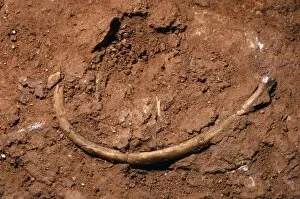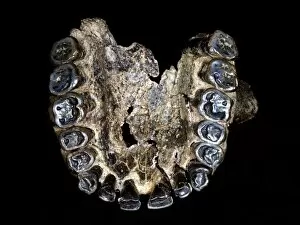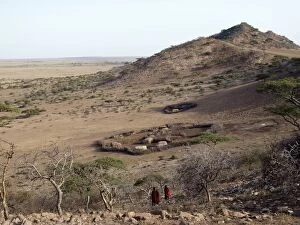Palaeoanthropological Collection (#2)
"Unveiling the Ancient Secrets
All Professionally Made to Order for Quick Shipping
"Unveiling the Ancient Secrets: A Journey through Palaeoanthropological Discoveries" Step into the captivating world of palaeoanthropology as we explore remarkable hints that shed light on our ancient origins. The Olduvai Gorge landscape in Tanzania (C015 / 6429) serves as a time capsule, preserving invaluable evidence of early human existence. Among these clues is the enigmatic Red Lady of Paviland femur (C016 / 5028), challenging conventional notions with its unexpected gender attribution. Meanwhile, Homo heidelbergensis skull (Cranium 5) (C015 / 6921) offers insights into our evolutionary path, showcasing distinct features that bridge the gap between archaic and modern humans. Delving deeper, we encounter the Australopithecus africanus pelvis from STS-14 (C015 / 6919), providing glimpses into our ancestors' locomotion and reproductive strategies. Ivory and bone tools from the Upper Palaeolithic era (C016 / 5026) reveal early human ingenuity and resourcefulness. Transitioning to later periods, Neolithic flint arrowheads emerge as crucial artifacts in understanding technological advancements. Their presence - be it C014/1034, C014/1032, or C014/1030 - signifies humanity's mastery over stone-age weaponry for hunting and defense purposes. Moreover, scattered stone-age flint fragments (C014 /1020) offer tantalizing fragments of prehistoric life while individual Neolithic flint arrowheads like C014/1023, C014/1022, and C014/1025 provide intricate details about craftsmanship during this transformative period. These palaeoanthropological treasures unlock doors to an ancient past long forgotten but forever imprinted within these remnants. Join us on this enthralling journey where science unravels mysteries buried beneath layers of time – revealing extraordinary tales of human evolution and the ingenuity that shaped our species.
















































